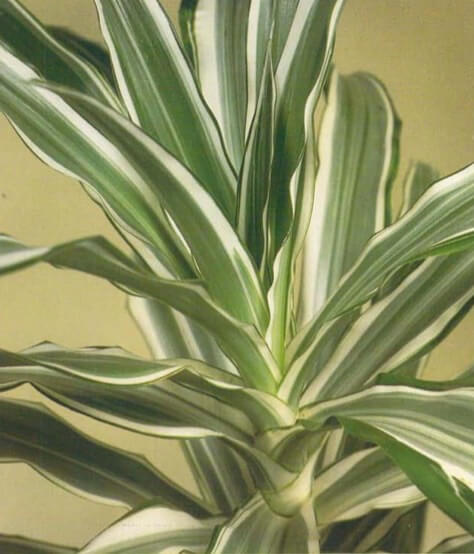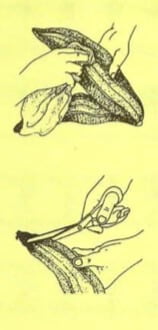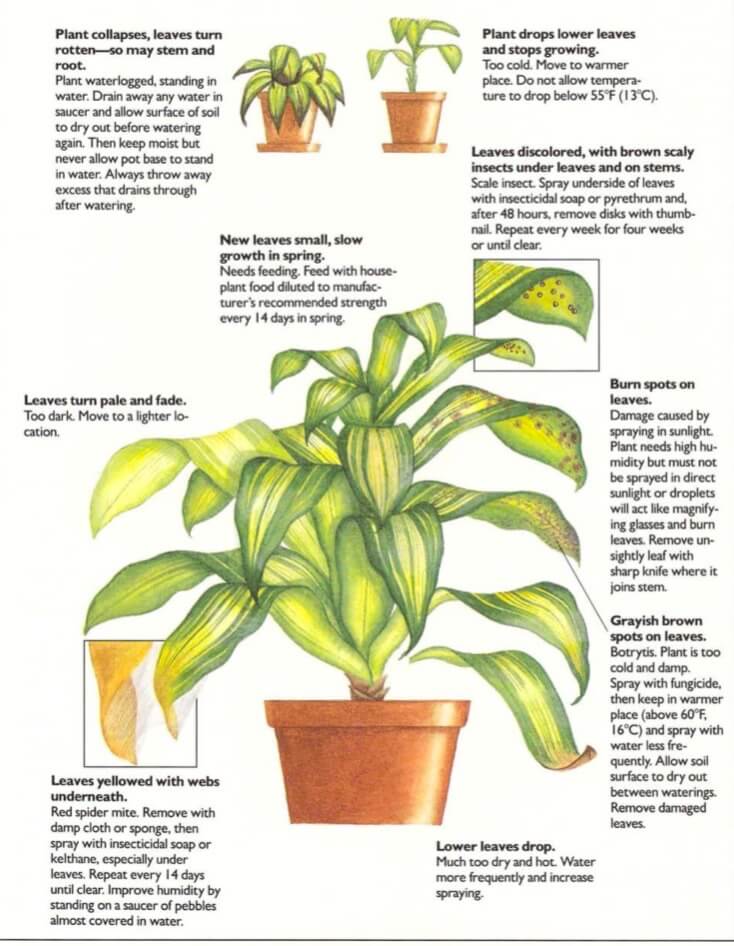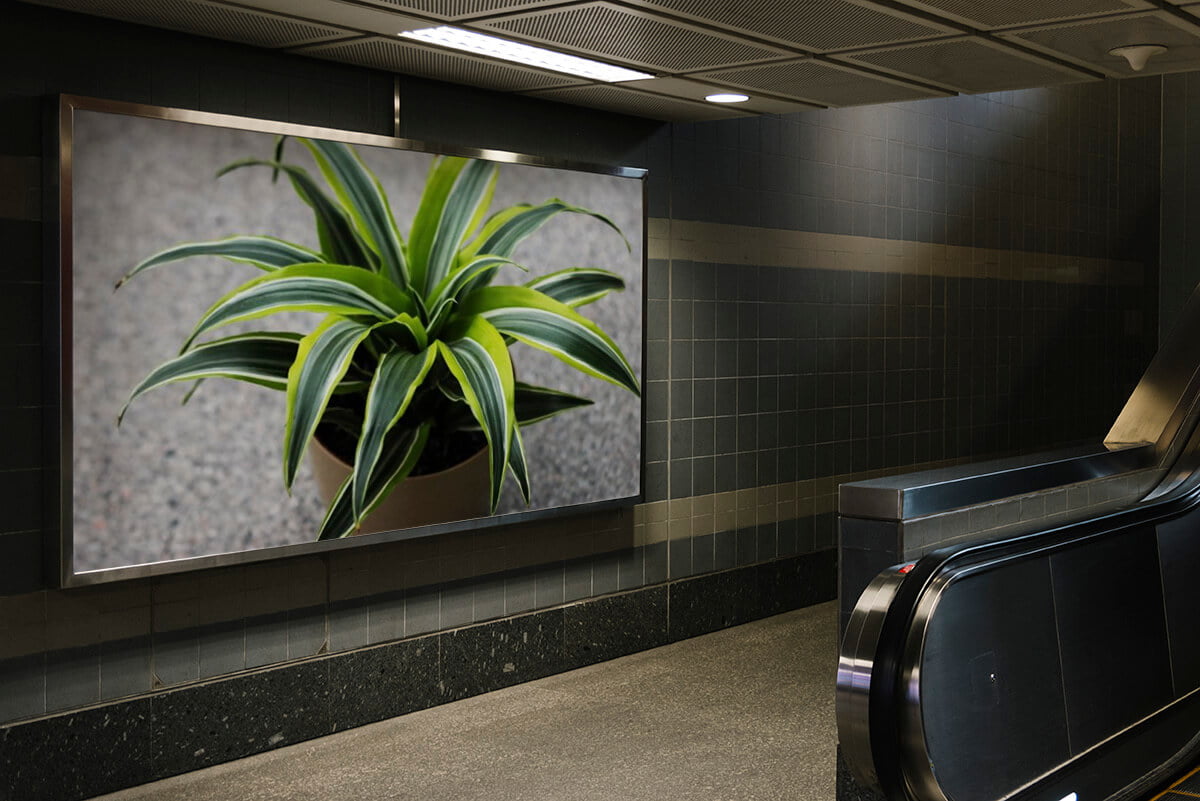[Ebook Việt Hoá] The Instant Guide to Healthy Houseplants (Hướng dẫn tức thời để chăm cây trong nhà khoẻ mạnh), Chi Dracaena - Chi Huyết Giác
[Ebook Việt Hoá] The Instant Guide to Healthy Houseplants: Dracaena fragans (Corn plant)
- Nguồn: [Ebook Việt Hoá] The Instant Guide to Healthy Houseplants (Hướng dẫn tức thời để chăm cây trong nhà khoẻ mạnh)
- Biên tập: Dũng Cá Xinh
- Biên dịch: Team Codai.net
English
Like the Ficus and Philodendron groups of plants, Dracaenas include a large number of different species, many of which area among the most popular of indoor plants. They range from species that will stand a mild frost to those that are at home in tropical-jungle conditions. Members of the Lily family, their scientific name comes from the Greek word for a female dragon, and many include the word dragon in their popular names. All Dracaenas have similar shaped, strap like leaves; they grow as a rosette from a central stem, which gradually elongates. The different types vary in color and size.
Dracaena fragrans (or Dracaena fragrans ‘Massangeana’) grows indoors to 2-3 feet (61-91 cm).

Light
Does best in good light but out of midday summer sun. Tolerates 2-3 weeks in a shady place.
Temperature
Year-round minimum, 55°F (13°C); better at 65°F (15°C). If over 75°F (24°C) in summer, increase humidity and fresh air.
Water
Water once a week in winter and at least twice a week in summer. Never let plant stand in water or roots will rot.
Humidity
Spray twice weekly, more often if temperature is near maximum, using rainwater or distilled water if possible.
Feeding
Feed with liquid houseplant food at manufacturer’s recommended strength every 14 days in spring and summer.
Soil
Use loam- or peat-based potting soil.
Repotting
Repot annually in spring while young. For plants over 4 years old, repot every second or third year. Make sure drainage is good.
Cleaning
A damp cloth is appropriate. Use leafshine not more than once a month.
Maintaining healthy leaves
- 1. Clean by wiping gently with a soft, damp cloth, supporting leaf with other hand.
- 2. If tips are brown and dry, cut off just inside the dry area to avoid scarring healthy tissue.

What Goes Wrong

- Plant collapses, leaves turn rotten so may stem and root: Plant waterlogged, standing in water. Drain away any water in saucer and allow surface of soil to dry out before watering again. Then keep moist but never allow pot base to stand in water. Always throwaway excess that drains through after watering.
- Plant drops lower leaves and stops growing: Too cold. Move to warmer place. Do not allow temperature to drop below 55°F (13°C).
- Leaves discolored, with brown scaly insects under leaves and on stems: Scale insect. Spray underside of leaves with insecticidal soap or pyrethrum and, after 48 hours, remove disks with thumb- nail. Repeat every week for four weeks or until clear.
- Leaves turn pale and fade: Too dark. Move to a lighter location.
- Burn spots on leaves: Damage caused by spraying in sunlight. Plant needs high humidity but must not be sprayed in direct sunlight or droplets will act like magnify- ing glasses and burn leaves. Remove un- sightly leaf with sharp knife where it joins stem.
- Grayish brown spots on leaves: Botrytis. Plant is too cold and damp.
Spray with fungicide, then keep in warmer place (above 60°F, 16°C) and spray with water less frequently. Allow soil surface to dry out between waterings. Remove damaged leaves. - Leaves yellow with webs underneath: Red spider mite. Remove with damp cloth or sponge, then spray with insecticidal soap or kelthane, especially under leaves. Repeat every 14 days until clear. Improve humidity by standing on a saucer of pebbles almost covered in water.
- Lower leaves drop: Much too dry and hot. Water more frequently and increase spraying.
- New leaves small, slow growth in spring: Needs feeding. Feed with house- plant food diluted to manufacturer’s recommended strength every 14 days in spring.
Tiếng Việt
Giống như các nhóm chi Sung và họ Ráy, Thiết mộc lan bao gồm lượng lớn các loài khác nhau, nhiều loài trong số đó vô cùng phổ biến trồng trong nhà. Chúng đa dạng từ loài chịu được sương giá nhẹ đến loài sống ở nhà trong điều kiện rừng nhiệt đới. Các thành viên của gia đình Lily, tên khoa học của chúng bắt nguồn từ tiếng Hy Lạp là một con rồng cái, có nhiều loài chứa từ rồng trong tên của chúng. Tất cả cây Thiết mộc lan có hình dạng giống nhau, những chiếc lá giống như những dây treo; và phát triển như một hoa thị từ thân giữa, dần dần dài ra. Các loài khác nhau về màu sắc và kích thước.
Dracaena fragrans (hoặc Dracaena fragrans ‘Massangeana’) mọc dài đến 2-3 feet (61-91 cm) trong nhà.

Ánh sáng
Phát triển tốt nhất trong ánh sáng trực tiếp nhưng tránh ánh nắng giữa trưa mùa hè. Có thể sống trong râm mát 2-3 tuần.
Nhiệt độ
Tối thiểu quanh năm, 55 độ F (13 độ C); tốt hơn ở 65 độ F (15 độ C). Nếu trên 75 độ F (24 độ C) vào mùa hè, hãy tăng độ ẩm và không khí trong lành.
Nước
Tưới nước mỗi tuần một lần vào mùa đông và ít nhất hai lần một tuần vào mùa hè. Không bao giờ để cây bị đọng nước nếu không rễ sẽ bị thối.
Độ ẩm
Phun ẩm hai lần mỗi tuần, thường xuyên hơn nếu nhiệt độ cao và tốt nhất nên sử dụng nước mưa hoặc nước cất.
Bón phân
Sử dụng phân bón hữu cơ theo khuyến cáo của nhà sản xuất cứ 14 ngày một lần vào mùa xuân và mùa hè.
Đất
Sử dụng đất mùn hoặc than bùn.
Thay chậu
Khi cây còn non, thay chậu hàng năm vào mùa xuân. Đối với cây trên 4 tuổi, thay chậu vào năm thứ hai hoặc thứ ba. Đảm bảo thoát nước tốt.
Làm sạch
Một miếng vải ẩm là thích hợp. Sử dụng xịt bóng lá không quá một lần một tháng.
Giữ lá khỏe mạnh
- 1. Làm sạch bằng cách lau nhẹ bằng khăn mềm và ẩm, dùng tay còn lại đỡ lá.
- 2. Nếu chóp cây có màu nâu và khô, hãy cắt bỏ phần trong khu vực bị khô tránh để lại vết cho mô lành.

Những vấn đề có thể xảy ra

- Cây bị đổ, lá hoặc có thể thân rễ bị thối nhũn: Cây bị úng, đọng nước. Xả hết nước trong đĩa và để cho bề mặt đất khô trước khi tưới lại. Sau đó giữ ẩm nhưng không được để đế chậu đọng trong nước. Luôn đổ bỏ phần nước thừa thoát ra sau khi tưới.
- Cây rụng lá và ngừng phát triển: Quá lạnh. Di chuyển đến nơi ấm áp hơn. Không để nhiệt độ giảm xuống dưới 55 độ F (13 độ C).
- Lá bạc màu, có côn trùng vảy nâu dưới lá và trên thân: Côn trùng vảy. Xịt mặt dưới của lá bằng xà phòng diệt côn trùng hoặc pyrethrum và sau 48 giờ loại bỏ những tấm tròn nhỏ. Lặp lại hàng tuần trong bốn tuần hoặc cho đến khi khỏi hẳn.
- Lá xanh nhợt và phai màu: Quá tối. Di chuyển đến một địa điểm sáng hơn.
- Vết cháy trên lá: Hư hại do phun ẩm dưới ánh nắng. Cây cần độ ẩm cao nhưng không được phun trực tiếp dưới ánh nắng mặt trời nếu không các giọt nhỏ sẽ giống như kính phóng đại và làm cháy lá. Dùng dao sắc loại bỏ những lá xấu nối với thân cây.
- Các đốm nâu xám trên lá: Nấm mốc. Cây quá lạnh và ẩm ướt.
Phun thuốc diệt nấm, sau đó để ở nơi ấm hơn (trên 60 độ F, 16 độ C) và phun nước ít hơn. Để bề mặt đất khô giữa các lần tưới. Loại bỏ các lá bị hư hỏng. - Lá màu vàng với mạng nhện bên dưới: Nhện đỏ. Loại bỏ bằng vải ẩm hoặc bọt biển, sau đó phun xà phòng diệt côn trùng hoặc kelthane, đặc biệt là dưới lá. Lặp lại sau mỗi 14 ngày cho đến khi khỏi hẳn. Cải thiện độ ẩm bằng cách đặt trên một đĩa sỏi gần như ngập trong nước.
- Lá dưới rụng: Quá khô và nóng. Tưới nước thường xuyên hơn và tăng cường phun.
- Lá mới nhỏ, chậm lớn vào mùa xuân: Cần nuôi dưỡng. Sử dụng phân bón cho cây trong nhà pha loãng theo khuyến nghị của nhà sản xuất 14 ngày một lần vào mùa xuân.



